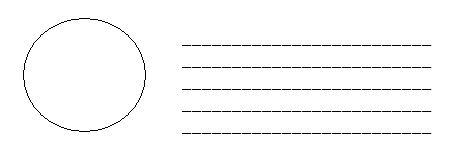|
For a printer friendly version of this lab, click here.
Background: We will be preparing two (2) types of slides for this lab: a dry mount slide and a wet mount slide.
A dry mount slide is made by placing the specimen directly on a slide and then covering the specimen with a cover-slip. On the other hand, a wet mount slide is made by placing a fluid solution on a slide, suspending a specimen in the solution and then covering the specimen and solution with a cover-slip. A wet mount slide may also be made by first combining the specimen and fluid solution; placing this mixture on a slide and then covering the specimen/solution mixture with a cover-slip. In many cases, a stain such as Lugol's iodine, methylene blue, or crystal violet may be added to specimens in order to increase contrast. The stain can be directly added to the specimen when first preparing the slide or it can be added later after viewing the specimen without the stain. CAUTION: these dyes will stain skin and clothing; they are also harmful if ingested. Remember that the only difference in the procedure of preparing dry mount and wet mount slides is that dry mount slides receive no fluid solution. You should prepare yourself for this lab by becoming familiar with the history of the microscope and the parts of the microscope. In addition, be aware of the safety procedures used when performing any lab activities utilizing the microscope.
Materials:
Procedure for dry mount slide:
1. Place a sliver of onion in the center of the slide 2. Carefully lower the cover-slip onto the slide - do not drop the cover-slip 3. Secure your slide to the stage (with the spring clips) 4. Focus on the onion cells
Procedure for wet mount slide:
1. Place a drop of saline in the center of the slide 2. Place a sliver of onion in the center of the slide 3. Add a small drop of methylene blue stain to the preparation and gently agitate 4. Hold the cover slip so that its edge touches one side of the fluid 5. Carefully lower the cover-slip onto the preparation - do not drop the cover-slip 6. Secure your slide to the stage (with the spring clips) 7. Focus on the onion cells
Questions:
1. What is a microscope and how does it work? 2. How do you obtain an optimal image with a microscope? What limits what you can see with the microscope? 3. Explain the differences between magnification, resolution and contrast. How do they each contribute to the image that you see with the microscope? 4. How do you measure the size of a single cell? 5. How are slides (wet mounts and dry mounts) prepared? 6. Why stain cells? When preparing the lab report, use the following diagram to draw and explain what you viewed through the microscope. Label one of the circles for the dry mounted slide and the other for the wet mounted slide. Draw what you saw on the slides within the circle (the circle is your field of view.) Describe what you saw on the provided lines. For a printer friendly version of the diagram, please click here. When doing the lab report write-up, be sure to follow the guidelines.
< Lab Notes > |
